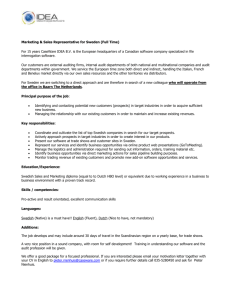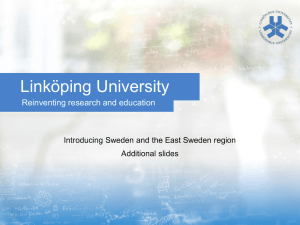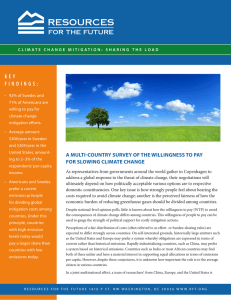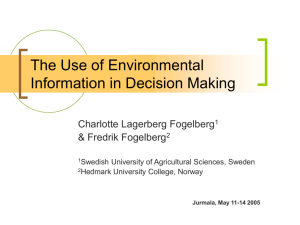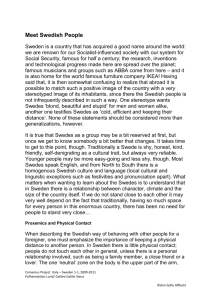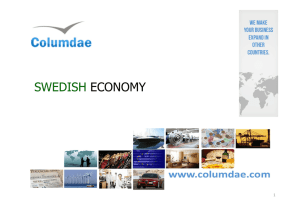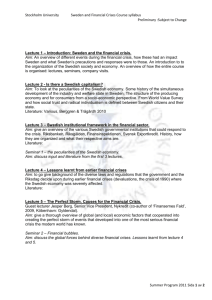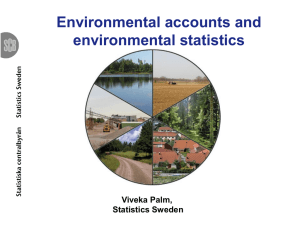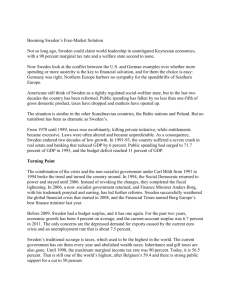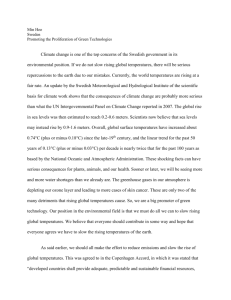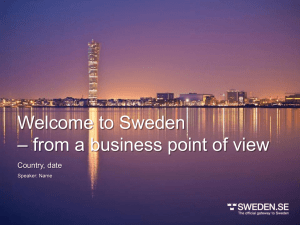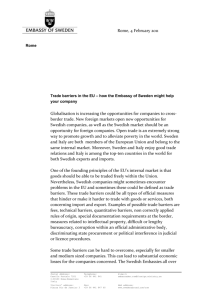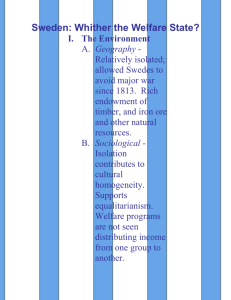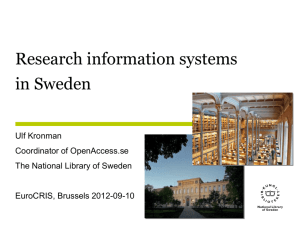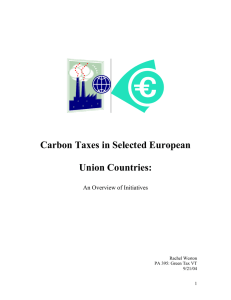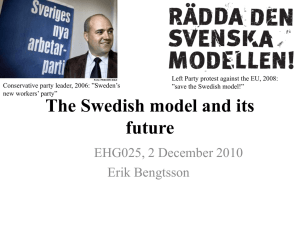Keynote speech
advertisement
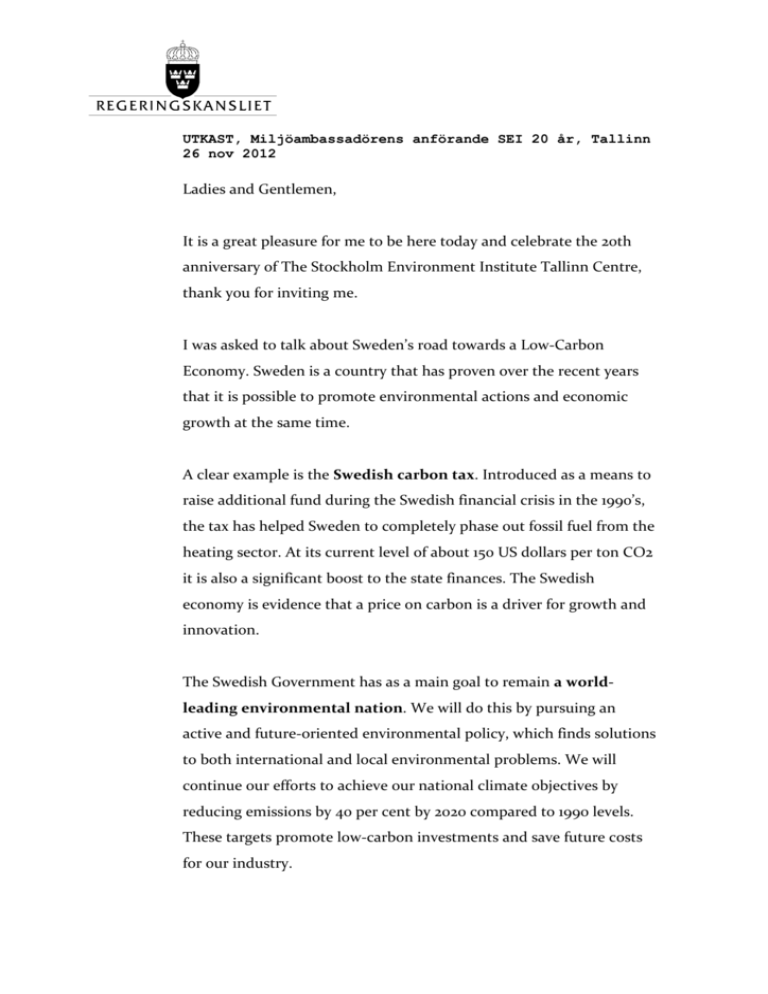
UTKAST, Miljöambassadörens anförande SEI 20 år, Tallinn 26 nov 2012 Ladies and Gentlemen, It is a great pleasure for me to be here today and celebrate the 20th anniversary of The Stockholm Environment Institute Tallinn Centre, thank you for inviting me. I was asked to talk about Sweden’s road towards a Low-Carbon Economy. Sweden is a country that has proven over the recent years that it is possible to promote environmental actions and economic growth at the same time. A clear example is the Swedish carbon tax. Introduced as a means to raise additional fund during the Swedish financial crisis in the 1990’s, the tax has helped Sweden to completely phase out fossil fuel from the heating sector. At its current level of about 150 US dollars per ton CO2 it is also a significant boost to the state finances. The Swedish economy is evidence that a price on carbon is a driver for growth and innovation. The Swedish Government has as a main goal to remain a worldleading environmental nation. We will do this by pursuing an active and future-oriented environmental policy, which finds solutions to both international and local environmental problems. We will continue our efforts to achieve our national climate objectives by reducing emissions by 40 per cent by 2020 compared to 1990 levels. These targets promote low-carbon investments and save future costs for our industry. The goal is that by 2050 Sweden will have no net emissions of greenhouse gases. We have recently started a broad process, involving actors and stakeholders from many parts of society, to create a Swedish roadmap on how to reach this goal. In this process we will draw up scenarios taking into account preconditions and possibilities in all sectors of society and outline necessary measures and policy instruments. Sweden will build on the early good examples we have had, continue to develop innovative solutions to our global challenges, be a forerunner in the creation of the green economy and, most importantly, share experiences and do this in cooperation with other countries. A fulfilment of the 2050 goal requires transformative changes. I am confident those changes are possible and that early movers on change will benefit. We also know that we need to work with complementary initiatives. The Climate and Clean Air Coalition to reduce short lived climate pollutants, now gaining support of more than 20 countries is one important contribution to this. The short lived climate pollutants are black carbon, methane and tropospheric ozone. These pollutants are, after CO2 , the most important contributors to the global greenhouse effect. Reducing the SLCPs gives effect on the short run for the climate as well as for the agricultural yield and health. Let me take an example from our own neighborhood. The Arctic region is warming at a double pace when compared to the rest of the world. We know that melting ice and permafrost has an accelerating effect on the climate globally with increasing heat absorption and release of methane. By reducing emissions of short lived climate pollutants in the North, we are slowing warming everywhere on the globe and at the same time reaping benefits to health and food production. Let me point out that action on Short lived climate pollutants must complement and supplement global action to reduce carbon dioxide, in particular efforts under the UNFCCC. To sum up, Sweden has managed to decouple emissions from economic growth. Yet, many challenges remain down the road towards our goal of no net emissions to the atmosphere in the year 2050. I’m confident the hard work will be rewarding, not only for the climate but also for our economy. Let me finish by exploring a bit on the Rio+20 outcome. We can all agree that the result was not on par with Sweden’s and the EU's ambition but it does give us a basis on which to continue working within a number of key areas for achieving sustainable development. While the solutions will differ among governments, organisations and business, we know that business as usual is not an alternative. Nothing less than an innovation revolution is needed. A step in the right direction is the decision at Rio+20 to create global sustainable development goals. Now, it’s up to all of us to take that agenda forward – to involve scientists and business, to explore the potential of ICT and innovation, and to ensure that they fully encompass all three dimensions of sustainable development. Ensuring coherence between the work on SDGs and the process to consider the post 2015 agenda will be another important challenge. We will do our share, including through the Swedish representative on the Secretary Generals’ High Level Panel on the post 2015 development agenda. I look forward to contribute to the discussions here today and I also look forward to 20 more years of great partnership and exchange of innovative ideas for a safer, more environmental friendly world. Thank you for your attention!


